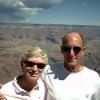Can a really aggressive forward slip on final ever produce a spin?
-
Members Online
- kalleh
- M20S Driver
- Stephan Kablitz
- Scott H
- TheAv8r
- IgorD
- Niko182
- Chris Higgins
- Ibra
- Kelpro999
- Rodeo John
- cbarry
- ArtVandelay
- Stealth Mooney
- Eight8Victor
- famos_amos
- TCC
- EricJ
- N177MC
- FlyingScot
- Pinecone
- jeff s
- Danb
- Zippy_Bird
- Igor_U
- PT20J
- FlyingDude
- Adam_StPete
- Shadrach
- N305EP
- rickseeman
- Jaystew324
- MatthiasArnold


Recommended Posts
Join the conversation
You can post now and register later. If you have an account, sign in now to post with your account.